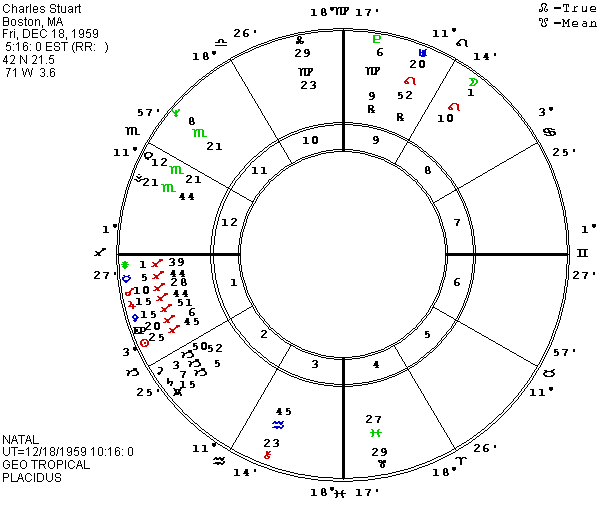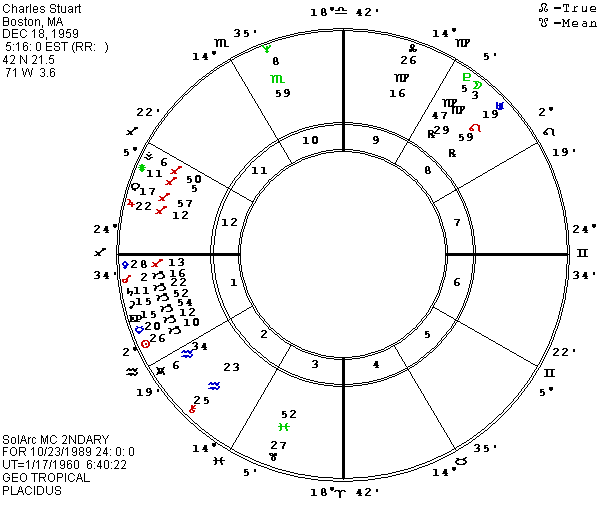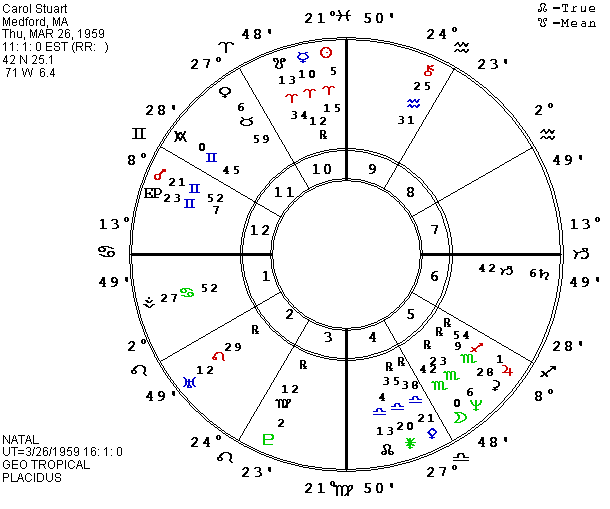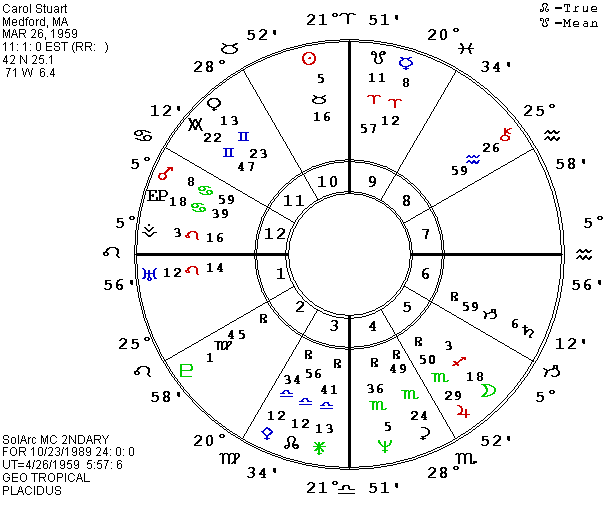A Boston Tragedy
Zip Dobyns
Most readers will have heard about the shooting of Carol Stuart on October 23, 1989. She and her husband, Charles Stuart, were en route home from a class for prospective mothers. Carol was seven months pregnant. Carol was shot in the back of the head and Charles was shot in the stomach. Charles said that it was done by a black man after he had robbed them of $100 and some jewelry. There were some puzzling details at the time. There was no reason for the Stuarts to be where they were in a crime-ridden part of Boston which required a detour from a direct route home. There was an unexplained delay between the shooting and Charles’ contact with the police on his car phone, and Charles was unable to say exactly where they were so police were delayed in reaching them. But Charles was seriously injured and the police went into action to round up possible suspects. Christopher Stuart was taken from his dying mother in an emergency cesarean section at 9:30 P.M. on the evening of the shooting, October 23, but he only lived 17 days. Carol Stuart was officially declared dead at 3 A.M. on October 24.
After his recovery, Charles was shown a police lineup of suspects and he identified one of them as most like his assailant. The man protested his innocence and his family supported his statement that he was home with them when it happened, but he had a police record and he was charged with the crimes. Then, rather than see an innocent man go to jail, a brother of Charles Stuart came forward to say that Charles had done the shooting. Charles had asked his brother, Matthew, to meet him in the Mission Hill area and he had tossed into his open car window Carol’s purse with the gun and her ring inside. Matthew said that he did not see Carol slumped down inside Charles’ car. After he heard of the shooting, he threw the gun into the river. When Charles learned that his brother had spoken to the police, he committed suicide by jumping into the river at about 6:45 A.M. on January 4, 1990. Matthew was born on February 19, 1966 at 7:28 A.M. EST in Boston. He is said to have adored his brother. After the initial facts were revealed, more facts surfaced. Charles had talked to both Matthew and a friend about killing Carol. The friend said that Charles’ tone was matter-of-fact and unemotional. He had wanted Carol to have an abortion and she had refused. He felt that he had lost control of the relationship and he was afraid that she would not want to go back to her $41,000 a year job after she had the baby. Charles was making over $100,000 a year as manager of a fur store but he wanted to start his own restaurant rather than work for someone else. He had taken out large insurance policies on Carol’s life.
Frances McEvoy provided the birth data for the Stuarts, and she has also written about the family backgrounds. Such information is very valuable to astrologers who are serious about understanding people through their horoscopes. Charles was the eldest of four brothers with two older half sisters and a father who was a part-time bartender. Charles was not a good student, uninterested in college, and chose to attend a vocational high school where he majored in culinary arts. He did start at Salem State College but dropped out after two months. He met his future wife while working as a chef at the Driftwood restaurant. After he became the manager of a fur store, he claimed to have attended Brown and to have graduated from Salem State College with a major in business administration. No one knew that this was a lie until after his death. Charles was described as handsome and charming (when he chose to be) but also as reserved and silent.
Carol Stuart was almost his opposite in many ways. She was warm, open and talkative and a gifted student. Her family was Italian-American, and she remained very close to both of her parents, calling them every night, even on her honeymoon. She was 20 when she met Charles and fell madly in love with him. They married on October 13, 1985 after Carol graduated from law school and passed the bar exam. With their combined income, they were able to buy a house in suburban Reading with a pool and a Jacuzzi. Friends described them as a “Camelot couple” with an ideal marriage.

The chart of Charles Stuart is a valuable one for astrologers who need to remember that we are dealing with psychological principles which can be expressed in a variety of ways. There is a strong fire emphasis in the chart, and fire is essentially the feeling of “I know what I want and I have a right to it.” The one-nine combinations are especially strong in this chart with eight factors in Sagittarius in the first house including the Ascendant, East Point and Mars which bring a double emphasis on letter one (the planet and angles of identity in the first house). Jupiter in its own sign puts a double letter nine into the first house. The five-nine and one-five combinations are also present with Aries in the fifth house and Leo in the ninth house. One-five mixtures are almost pure self-will. One-nine shows an identification with God and five-nine is ego-involved with God. But the manifestations can range from “I must do God’s will” to “I am God and I have the right to anything I want.”
Air is the weakest element in the chart. All of the water houses are occupied with the Moon in one, one of the Moon’s nodes in another, and Neptune in Scorpio intensifying the water side of the nature. Factors in Virgo and Capricorn support the ability to work in practical ways, especially since there are trines between them and they are mostly in earth houses. The special talents of air, the weak element in this chart, include the ability to take things lightly, to understand and accept other people as they are, as equals. Ample intelligence and verbal fluency can be shown by the other (non-air) mutables, especially by Sagittarius, but the emotional intensity found with strong fire and water make it harder to take turns, to share with others as equals. The tendency is to concentrate on personal desires. Water can be dependent or nurturing but has a harder time sharing as an equal. In a self-centered person, an emphasis on water only adds to the absorption in personal needs where an empathic person will be sensitive to the needs of others.
One of the most striking features of Charles Stuart’s chart is the over-loaded first house. This over-emphasis on letter one indicates some type of self-absorption, but its manifestation can range from a painful self-consciousness and self-doubt to the shocking, arrogant selfishness of Charles Stuart. I have seen a number of individuals with many planets in the first house, even when they were in air or fire signs, who were simply shy and self-effacing. They always reminded me of the caterpillar who was doing fine until he started thinking about which leg came after which and then he fell in the ditch. Everything has to go back inside to be checked out repeatedly before they risk action. In the same way, I have seen people with over-loaded seventh houses who never married. It is almost as if the relevant part of life becomes so important, the person cannot easily deal with it. Then there are the sociopaths like Charles Stuart (and some “religious” gurus) who seem to genuinely believe that they have a right to whatever they want. If the world does not give it to them, they try to take it.
If Charles had only had the strong one-nine combinations he might have stayed a successful salesman-promoter and played the field with women. But he had Juno (the marriage asteroid) exactly on his Ascendant, Pallas (another Libra asteroid) on his Jupiter, a Leo Moon in the eighth house and three factors in Scorpio including Venus, natural ruler of Libra. He did want an intense close relationship. The connection of his love with Scorpio could have led to his learning to respect the rights of the mate, to sharing possessions and pleasures and power. In his case, it took the form of wanting his mate to provide some of the joint income and being reluctant to risk losing it by having a child. Ceres (a key to our capacity to “mother” or be “mothered”) and Saturn (a key to “father” or “fathering”) are conjunct in Capricorn in the second house. Again, there are opposite potentials in the patterns. The person could be very responsible in the parental role, work hard to support the children, and have pleasure with them (Capricorn in the Taurus house). Or he could want to keep control of his own possessions and pleasures and be afraid of having to give up some of them if he became a parent. Charles wanted to own his own business, an appropriate goal for the Taurus-Capricorn combination, but his selfishness made him unwilling to share with a child.

The progressed chart has appropriate aspects, including some of the asteroids. I never get over my astonishment at the way the asteroids fit, even the ones with personal names. We have the asteroid Carol and also Carolina, a variant of Charles’ wife’s name. In his natal chart, Charles had Carol on his Saturn and Carolina on his Mars. Remember, I only mention aspects which are exact to one degree. What are the odds of that placement on the planets that traditional astrology called the “malefics”? Charles could have been very close to Carol and felt responsible for her or he could see her as a threat to his personal ambitions and goals. We have found Winchester repeatedly associated with guns. Natal Winchester was square natal Saturn and Carol. P Winchester was square P Saturn! The north node of Mars formed a T-square to natal Winchester and Saturn-Carol. Charles committed suicide by drowning. P Oceana was on his Ascendant and Juno. His P Antivertex, an auxiliary Ascendant, was on his natal Medea who killed her children. P Medea was octile P Mars. Another myth of a parent killing a child is the sacrifice of Iphigenia by her father Agamemnon. Charles had natal Icarus two degrees past his Antivertex, too wide for me to count, but it was exactly square natal Iphigenia. P Icarus was octile Jupiter and Pallas when he killed Carol and fell to his death. It reached an opposition to natal Moon between the two events. As Frances McEvoy reported, transiting Icarus had returned to its natal position when he committed suicide. It was exact within a half degree. P Moon was square the Ascendant and Juno when Charles was planning the murder. It was octile P MC and square the south node of Mars when he killed Carol. It had reached P Pluto when he committed suicide. P Mercury was quincunx Uranus and octile natal Mercury. P Sun was octile natal Mars. P Venus was square P mean nodes of the Moon and octile natal Venus. P Saturn was octile P Chiron. And much more. Charles Stuart was obviously frustrated that life was not giving him what he wanted as fully or as fast or as easily as he wanted. Astrologers sometimes forget that charts with mostly harmonious aspects (in addition to the fire emphasis) can point to people who expect life to be always gratifying. They are often more upset by minor delays or denials than people with stress aspects who expect life to be a struggle.

Carol’s chart has enough conflict aspects to show a struggle between her career drive (her tenth house Aries including the Sun connected her need for self-esteem to her career) and her domesticity (Cancer rising and many factors in the partnership signs and the houses of family). She was a modern woman who needed both career and family, and her big lesson was connected in some way to power with Saturn in its own sign but ruling the house of partnership and the south node of the Moon in the natural house of Saturn but in the sign of personal power. We know now that she needed to defend her own rights against a partner who sought only his own, but we would not have known that before her tragic death. Saturn, ruler of the seventh house, was trine both Venus and Pluto, natural keys to a mate, showing her expectation that she could have a happy marriage. And relatives and friends all thought that the relationship was a loving and happy one. Carol’s grand trine in earth signs showed good ability to handle the material world, so I would have assumed that the lesson involved juggling time and energy to make room for career, mate, and home and family. The only close stress aspect to Saturn was the square to the Sun, and Carol’s death came when she chose to have a child (the Sun rules procreation) and rejected Charles pressure for an abortion. She was a strong person, with Mars closely conjunct the Antivertex, the three factors in Aries, and a loaded fifth house. But I have seen many charts, especially of women who are subject to cultural pressures to repress their strength, where the individuals projected the power into the world with the tenth house placements, into the partner with Saturn ruling the seventh house, and tried to be perfect to the point of denying personal rights with Mars in the twelfth house. Carol was an intelligent person, a competent person, who would have adored and idealized her baby with Neptune and Jupiter in its own sign in her fifth house. Her death was a hard way to learn about keeping one’s power and seeing loved ones realistically rather than idealizing them, but if we believe in reincarnation, there is always another chance to try again.

Carol’s progressed chart had P Mars square P Mercury and trioctile P Ceres. Normally, Ceres in the fifth house indicates someone who wants children. P Neptune held a long quincunx to natal Sun and P Sun had reached the opposition to P Neptune with P Ascendant in a T-square to both. P Moon was trioctile P Vesta and quincunx P East Point, an auxiliary Ascendant. P Antivertex was conjunct Mars and the East Point as well as octile Venus and barely within orb of the square to the MC. P Jupiter was still in the opposition to natal Antivertex. P MC was opposite Pallas and quincunx the natal IC. P Venus was octile natal Vesta. P Pluto had a long-term square to Jupiter and was just one minute short of reaching a square to the Antivertex. Even a few seconds later on the birth time would bring that aspect into the one degree orb. Ironically, the two planets ruling the house most associated with death, Saturn and Uranus, the co-rulers of Aquarius, had long term harmony aspects. Saturn was trine Venus and Uranus was sextile-trine the nodes of the Moon for all of Carol’s short life. Pallas had retrograded to also form a sextile to Uranus and Juno was on the north lunar node.
There were also parallels and contraparallels to Saturn and Uranus which can operate rather like conjunctions and oppositions. Saturn and Pluto were in a long contraparallel to each other and the P East Point had moved to parallel Pluto. The P Moon was in a brief contraparallel to Uranus and P Ascendant was just one minute short of reaching the one degree orb to also form a parallel to Uranus. Parallels are in orb when two planets or angles are within one degree of each other in declination with both north or both south. If one is north and the other south, the aspect is a contraparallel.
And then there are asteroids. Carol had her natal Carol at twenty-five Scorpio so P Ceres was conjunct it for her pregnancy and death. The Quotidian (Q) MC was also conjunct P Ceres on the day she died. Q angles move about one degree a day as they circle the zodiac in a year. P Carol formed a double quincunx (yod) to P MC and P Antivertex, natal Mars and natal East Point. Natal Carolina was at 8 Libra to fill in a T-square to P Mercury and P Mars. P Saturn had held a lifetime opposition to natal Winchester at six Cancer and natal Klytaemnestra was at six Aries to produce another T-square. I didn’t remember the story about Klytaemnestra so had to look it up to see if it was relevant. She was the wife of Agamemnon who sacrificed their daughter Iphigenia to appease the goddess Artemis. Klytaemnestra retaliated by killing Agamemnon with the help of her lover, and her other daughter and her son then killed her in some of the Greek tragedies. The details are different but the theme of family members killing each other is certainly relevant. P Klytaemnestra in Carol’s chart was square Medea, another Greek story in which a parent kills children—in this case, the mother kills two children. P Winchester was octile or trioctile Carol’s mutable cross: Antivertex, P Pluto, Jupiter, and the Q Antivertex which completed the cross on the day she was shot. P Winchester was also square the natal Part of Death. The P Part of Death was on the north lunar node and P Juno, opposite the south lunar node (both mean and true nodes were in the same degree), and square the Ascendant-Descendant. P Atlantis was on P Venus and octile Vesta. P Carolina was square Sita, the prototype of a self-sacrificial Hindu wife and P Uranus was opposite Ariadne who saved Theseus from the Minotaur on Crete only to be later abandoned by him.
By the time I got to the baby, Christopher, I was ready to move on to something more cheerful. This story really does read like an ancient Greek tragedy. It is not surprising to find that Christopher had the heavy Capricorn stellium in the sixth house of health with Vesta opposite the Ascendant within three degrees and Mercury square it within five minutes of longitude. Premature babies are typically killed by undeveloped lungs which are ruled by Mercury. Vesta, our super-Virgo asteroid is often a key to health issues. By the time Christopher died, transiting (T) Mercury had reached Pluto and T Vesta was square Mars and quincunx the south lunar node. T Sun was octile Uranus and T Venus was leaving a conjunction to Uranus to oppose Ceres. When I am putting a chart on a wheel without progressions in the outer circle, I often put the heliocentric version of the natal chart outside the geocentric one. There are some interesting heliocentric positions, including some of the asteroids. Helio (H) Juno squares the Ascendant within one degree and H Mars is conjunct H Juno. H Winchester is opposite Pluto and H Carol is on the Antivertex. Since the Antivertex is a key to personal identity like the Ascendant, the last aspect suggests that Christopher is with his mother, Carol. On that note, we will wish them well in the next level of life.